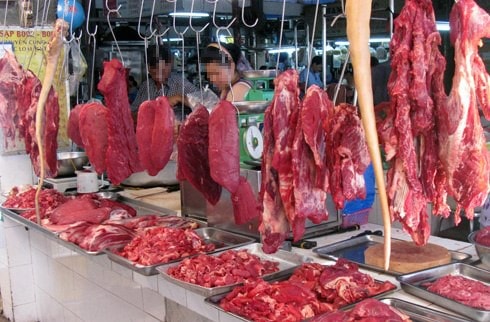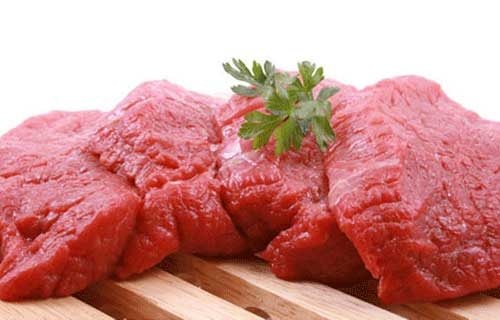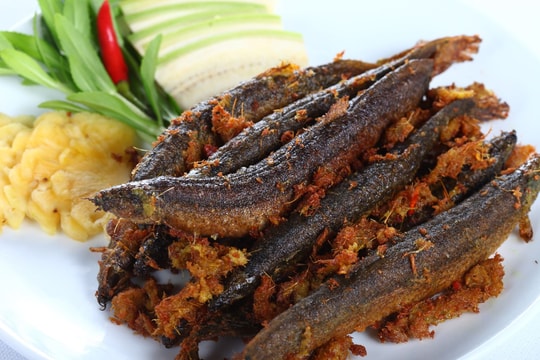Tips to distinguish pork and buffalo meat from 'transforming' into beef
How to distinguish fake pork from beef when many people have "magically" transformed it and made huge profits, regardless of the health risks to customers?
How to distinguish fake pork from beef when many people have "magically" transformed it and made huge profits, regardless of the health risks to customers?
"Transform" flabby pigs into genuine cows
The “technology” of transforming buffalo meat into beef has been around for a long time, and with the high profit, it is growing more and more. The common point of the techniques to transform buffalo or pork into beef is to “mix meat” after slaughtering the buffalo or pork, choosing large pieces of meat, filtering out all the fat, especially the buffalo meat must be stripped of all the white tendons.
 |
| It is very difficult to distinguish fake and real beef with the naked eye. |
Buffalo meat is dark and firm, similar to beef, so just by sprinkling cow blood it is difficult to detect fake buffalo meat.
For dead pork and buffalo meat, use beef fat to fry and extract the liquid, then rub it around the meat. Recently, in addition to beef fat, buffalo and pork meat are also marinated with Chinese beef flavoring to create a very distinctive beefy smell.
Realistic thanks to "additives"
The red meat of the pig is tough like beef, cheap so it is the most popular choice for beef imitation. For every 1kg of pork butt, shoulder and especially the muscle meat of the pig with long fibers like beef are often chosen to marinate with 0.2 "magically" eliminating all the smell of the pig meat.
There is also a spice that costs 150,000 VND/package that softens and turns buffalo meat, pork, and even beef into Australian beef. The use of spices to prepare food has caused great concern among consumers.
According to nutrition expert Nguyen Hong Diep, National Institute of Nutrition, the pigs and buffalo meat used to make fake beef are mostly pigs that have stopped being able to reproduce (or dead buffalo) and are fed industrial feed to gain weight quickly. Therefore, the meat still contains growth hormones that have not been completely eliminated. If eaten, people will absorb these chemicals.
Some nutritionists say that chemicals that create beef flavor of unknown origin will increase the risk of food poisoning.
According to Master Hai Yen, Department of Food Technology and Post-harvest Technology, Hanoi University of Science and Technology, after marinating additives in pork, it will create a product that is very difficult to distinguish from beef. Food safety experts warn that using products containing synthetic colors can cause allergies, asthma, bladder cancer, and even create pathogens for the brain.
Most of the fake cow pigs are pigs that have lost their ability to reproduce and are raised on industrial feed, so the meat may still contain growth hormones that have not been completely eliminated. Eating them will put you at risk of absorbing these chemicals, causing nutritional imbalance in the body and harming your health with chemicals.
 |
| Illustration photo |
How to distinguish?
- Real beef is bright red, has small fibers, yellow fat, fresh dark pink color and a characteristic strong smell. Pork imitating beef will have larger and shorter fibers, not smooth, the fat is opaque white. Buffalo meat imitating beef will have a dark black color, large fibers, white fat.
- If the fake beef is soaked in cow blood, marinated with colorants... When you rub your hand on the meat, it will leave a little colorant on your hand. The rubbed beef on the fake meat will also fade due to loss of color. Or wash the beef right at the place of sale and the color will also fade. Or cut the meat into small pieces, the "fake beef" has different colors inside and outside (because the dyeing technology has not yet magically transformed both the inside and outside of the meat).
- Fresh, thinly sliced beef will feel like it sticks to the knife blade. Pressing your hand on it will feel like the meat sticks to your hand. Pork or buffalo meat imitating beef will have much less stickiness. Or pressing lightly on the piece of meat will feel different stickiness and elasticity. The sliced meat will feel crumbly and hard. If the meat is soaked in beef fat, after many hours the fake beef smell will be much reduced.
- Pork or buffalo meat imitating beef also has a very unpleasant fishy smell.
- Real beef is rich in nutrients and has a beefy smell. After cooking, it still has a dark pink color, sweet taste and a very characteristic strong smell. After stir-frying or boiling, it still retains its dark pink color and characteristic sweet taste.
According to SK&DS

.jpg)






